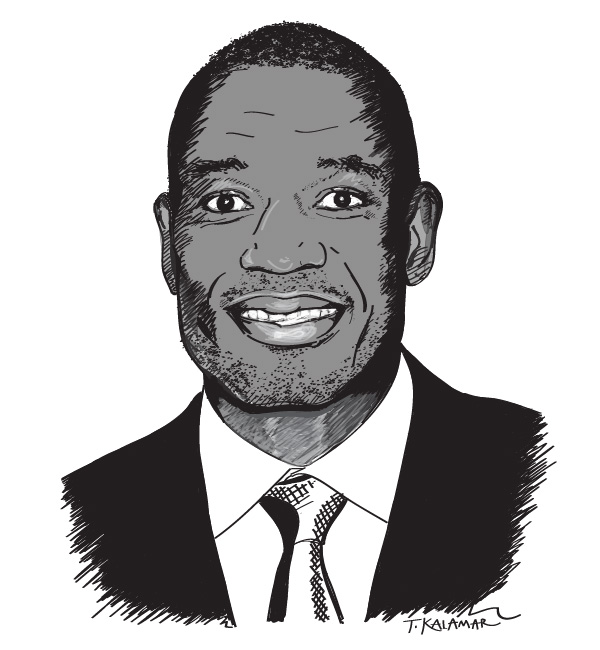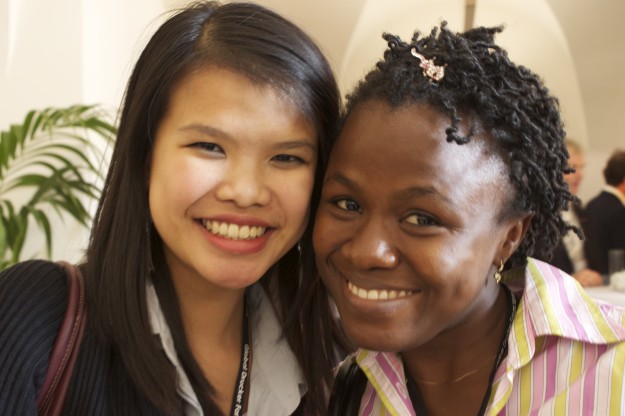By Elizabeth Haas Edersheim
In 1964, Peter Drucker wrote,
“The first indicator of the need for major innovation is one with which economists have been familiar for well over a century: Declining productivity.”
We constantly assume that the private sector is the engine of innovation. But we need to rethink even that. Many of the requirements of innovation — the patience to wait for results, the willingness to take significant risks — are difficult for companies to meet. Companies systematically under-invest in R&D, especially for exploratory research and technology development. Start-ups systematically focus on very narrow segments.
2008 global productivity growth was the worst it has been for 20 years, and 2009 does not look much better. Despite large investments in innovation during the past decade, this effort has failed to deliver beyond a few high profile internet areas — Google, Facebook. This failure may be contributing to our economic difficulties.
Innovation, as defined by Drucker, is new wealth-producing capacity. With that definition, gene therapy, alternative energy, biotech, micromachines, etc., have not yet delivered.
It is an opportune time for public-private partnerships. They can make a difference in the speed and scale of innovation and the patience of startups.
The public sector — governments and not-for-profits — needs to help support long-term investment by large and small companies alike. Then it needs to accelerate adoption of innovations. When public-private partnerships are disciplined, they can create a new community of businesses and institutions, and foster many wealth-producing innovations.
For purposes of conversation, let’s focus on the most productive of government roles in fostering wealth-producing innovations via public-private partnerships.
Role 1: Assumption Busting. The first step in any meaningful innovation is to abandon assumptions. The government’s regulatory power enables it to radically alter conventionally held assumptions about the nature of competition in an industry.
Some cite government regulation as the most important factor in America’s success in information technology. The trustbusters made AT&T lease its lines to others and eventually broke up the giant. Later they forced IBM to separate its hardware and software businesses. In both industries, these actions challenged assumptions about the level of investment and integration required to compete. It also fostered innovation by replacing stodgy monoliths with smaller, specialized companies that joined forces with other, similar companies with complementary capabilities. The result — tremendous innovation and the emergence of new standards to support the collaborations.
Governments can also protect outdated assumptions, often with disastrous results. As Drucker said, the worst thing a government can do is hinder the movement of capital and people to new products, technological solutions, and modes of competition. A stark example of this is the U.S. government’s role in the terminal illness of the U.S. automobile industry with its support of mediocre mileage standards, work-arounds, and low gas prices.
Similarly, in Japan, the government’s failure to force new assumptions and passive acceptance of the status quo may have contributed to the country’s lost decade.
Role 2: Spotlighting An Opportunity. Governments can greatly increase the likelihood of an innovation’s success through strong public policy signals. And they can coax results with money. For example, NASA in the U.S. created decades of innovations, not only through funding but by sustained attention to the aerospace industry and its innovations.
China now is trying to shine a light on the electric car, as the Chinese market gears up. The Economist predicts that, in 40 years, China will have as many cars as the whole world does now. The government’s vision is for the Chinese auto market to bypass internal combustion engines for new buyers and go directly to the electric car as soon as possible.
China’s Ministry of Industry and Information Technology and the government of Wuhan are working with Nissan in Shanghai on a pilot electric-vehicle program. Nissan is expected to provide free electric vehicles to Wuhan and to help develop a network of vehicle-charging stations. The ministry is also working on new facilities for their electric vehicles, joining forces with Beijing and BYD, the battery company that acquired a car company from the state. Beyond the auto companies, the ministry is working with a myriad other companies including grid intelligence companies, fueling, and network companies.
Role 3: Facilitating the Growth of Cutting-Edge Capabilities To Support Innovations. This role focuses on underlying capabilities needed for innovation vs. directly on the innovation. As an example, let’s look at the state of Maine’s boat building industry.
In April 2007, a delegation of boat builders from Maine headed to Shanghai for the China International Boat Show, where they were treated by the national government as honored guests. Maine’s success in international boat building was made possible largely by public-sector efforts to build the state’s competency through a series of deliberate steps. It is an example of how government can fund collaborations across institutions to build competencies not achievable by any one company.
Maine’s boat building industry was flat from 1980 to 1994 with the closure of a local naval base and declining productivity threatening to kill it entirely. Recognizing that the future of the state’s boatbuilding industry rested on its ability to harness innovation capabilities in composites and nanotechnology to compete globally, several different types of institutions formed an alliance to create an advanced engineered-wood composite center — a university, workforce training centers, private companies, trade associations, economic development agencies, and investment organizations.
Government investments made participation in the center possible for many of these institutions — and paid for the trip to China. As a result of this coalition, Maine’s boatbuilding industry has more than doubled in the last 10 years and is at the cutting edge of innovation — taking a 400-year coastal heritage of skilled craftsmanship to a new level.
Role 4: Supporting Entrepreneurs And New Businesses To Build Innovation Communities. Government regulations, tax policy, and economic incentives are all tools that can be employed to help form innovation communities often dominated by the small businesses that create the most jobs and get the most patents per capita.
In my visit to Korea, a newspaper reported that young Koreans do not want to take the risks involved in starting businesses, or even work for small businesses. When I spoke with some entrepeneurs, they indicated that it was virtually impossible to hire talented people unless they were brought from the U.S.. People are afraid of small companies and are used to the security, as well as the health insurance and pension benefits, associated with the larger companies.
Government action can reverse such a trend, helping communities embrace start-ups with bankruptcy laws and small business loans, and creating community awards and recognition for businesses that contribute substantially to innovation communities.
The United States’ Small Business Administration (SBA) understands the importance of entrepreneurs and a continuing pipeline of new businesses. Its goals align with this critical need:
– Continue to get loans out to small businesses
– Revitalizing the agency itself, which was reduced and lost its focus over the last eight years
– Making the SBA the strongest possible voice for small business in the U.S.
Certainly other public sector and non-profit entities can also play these four roles very successfully, with similar impact on the speed and scale of innovation. For example,The William J. Clinton Foundation supports a number of public-private partnerships. One worth following is the Clinton Climate Initiative, dedicated to environmental innovation. The Climate Initiative was launched in May 2006, when the former president’s advisor, Ira Magaziner, met with Ken Livingstone, then-mayor of London. Ken knew that the Clinton Foundation had joined forces with 60 different African countries to get a low-cost drug for HIV/AIDS brought to market, which none of them could have done independently. Ken suggested that the foundation undertake a similar project with large cities — which are huge contributors to greenhouse gas emissions — to advance some innovative-driven climate initiatives.
One such initiative is Clinton Climate Initiative’s C-40 project, which brings 40 cities together creating new economies-of-scale in demand for energy-efficient technologies — from the 367 million people that live in those cities — and linking demand with sources of supply. The C-40 project is a catalyst in accelerating market development for such innovations as clean-technology vehicles, energy-efficient lighting, chillers, solar control window films, and “cool” roofing that will help to lower the costs of building retrofits. These beneficial technologies all face a fundamental barrier to adoption: No customer is big enough to justify investing in cost-efficient scale production, and no company is ready to bet that future demand will approach that scale.
The Climate Initiative works with vendors to determine the volume necessary to fundamentally change their economics, using economic and life-cycle modeling to understand and think creatively about when and how a new technology can become attractive. The foundation then works with the C-40 cities and gains commitments to deliver that volume. They have broken through barriers that only a public-private partnership could. Hybrid buses, which first appeared in a few cities with big public subsidies, have been updated with newer technology and purchased for use in locations that manufacturers would not have approached for years. Already, many cities in India and Brazil are the world’s largest users of hybrid buses.
When I asked Magaziner to describe his biggest barrier, he responded that he is pushing everyone’s comfort zones. People can’t sit around waiting for the usual lag time from the usual circumstances – excessively long government time lines when it comes to ordering equipment from private suppliers, the hesitancy of entrepreneurs to push the envelope farther than they ever have, and so on. He’s right. Usual just doesn’t cut it under unusual situations like today’s productivity performance. Public-private partnerships can be significantly more agile than the usual contracts between state agencies and corporations. They are the right vehicle to speed the delivery and elevate the scale of innovations in the face of our critical needs.
©
Elizabeth Edersheim







